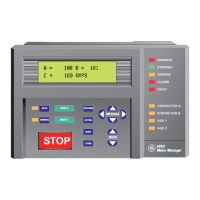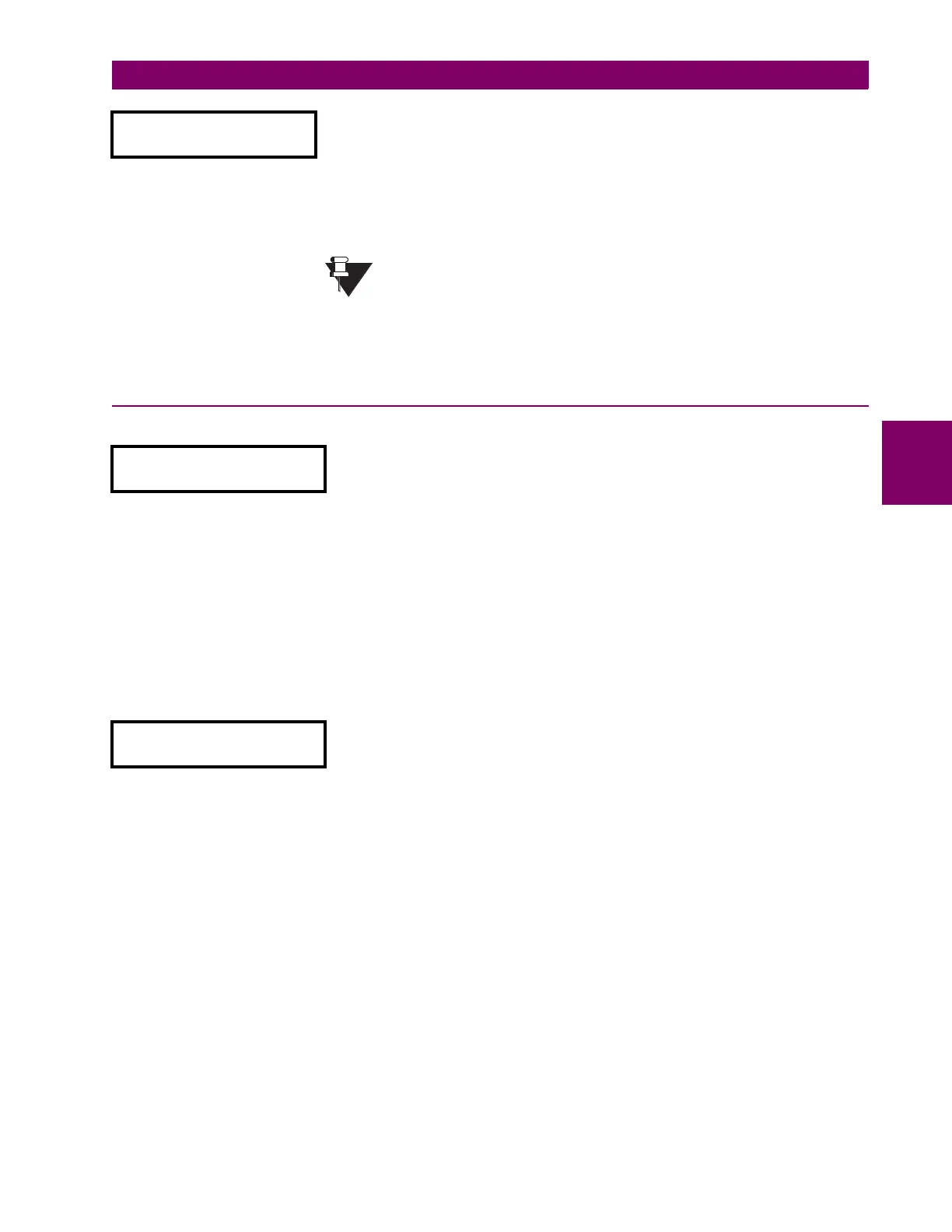GE Power Management
MM2 Motor Manager 2 4-15
4 SETPOINTS 4.3 S2 PROTECTION
4
4.3.6 MOTOR PROTECTION – OPTIONS
PATH: SETPOINTS
tt
S2: PROTECTION
ttt
MOTOR PROTECTION OPTIONS
GROUND FAULT TRIP
DLY ON START: 1.0s
Range: 0.0 to 10.0 seconds; Step: 0.1 second
This delay is used when the motor is in a STARTING condition. If the
ground current is equal to or above the GROUND PRIMARY TRIP PICKUP
setpoint value and remains this way for the time delay programmed in
this setpoint while the motor is starting, the assigned relay(s) will activate
and the CAUSE OF TRIP: GROUND FAULT message will be displayed.
When the phase current increases from 0, this delay is
used until the MM2 determines whether the motor is RUN-
NING or STARTING.
Refer to the ACCELERATION TIME setpoint in Section 4.3.7: LOAD PRO-
TECTION for details on how the MM2 detects a start condition.
MINIMIZE RESET TIME:
ENABLE
Range: ENABLE, DISABLE
The MM2 measures the motor thermal capacity used during a start.
This data can be used to minimize the lockout time following an Over-
load Trip. This allows the motor to be restarted after it has cooled to a
safe starting temperature. When set to DISABLE, the lockout time after
an Overload Trip will be the time required for the thermal memory to
reduce to 15%.
For example, if the thermal capacity used during the previous start is
40%, then after an occurrence of an Overload Trip, a RESET can be
accomplished when the thermal capacity decreases to 58% as shown:
100% – TC used during start – 2% Safety Margin
= 100% – 40% – 2% = 58%
STOPPED MOTOR COOL
TIME: 30 MINUTES
Range: 5 to 1080 minutes; Step: 1 minute
The STOPPED MOTOR COOL TIME determines how long it takes for a
stopped motor to reach steady state ambient temperature from its max-
imum allowable temperature. The maximum allowable temperature
occurs when the thermal capacity used reaches 100% (e.g. at the
occurrence of an Overload Trip). The Thermal Capacity value will
decrease exponentially to model the cooling characteristic of the motor.
The STOPPED MOTOR COOL TIME thus represents the time for the thermal
capacity value to decay through 5 time constants. Note that an Over-
load Trip can normally be reset when the thermal capacity value
decreases to 15%.
NOTE

